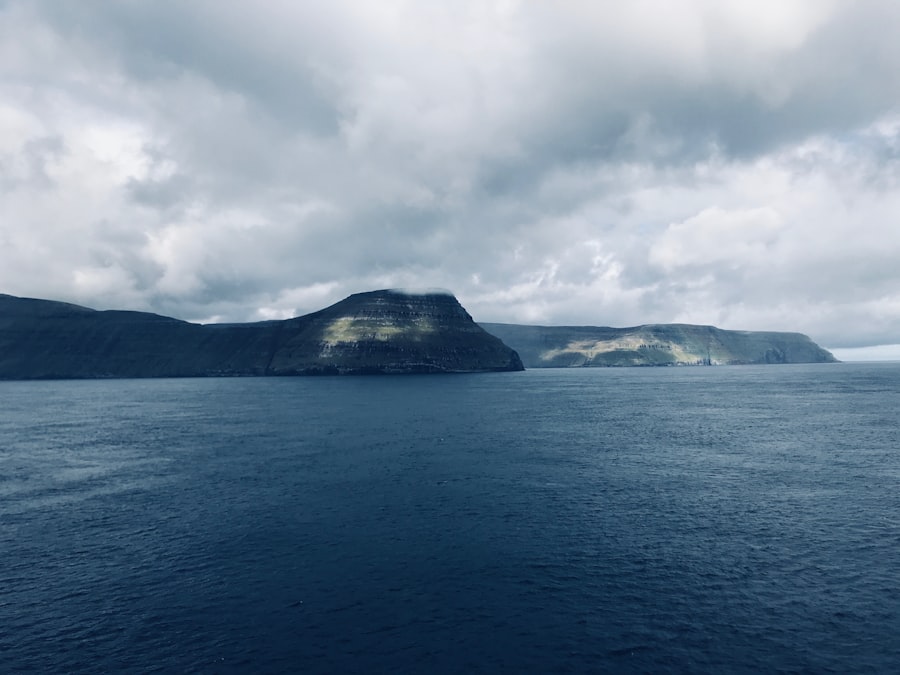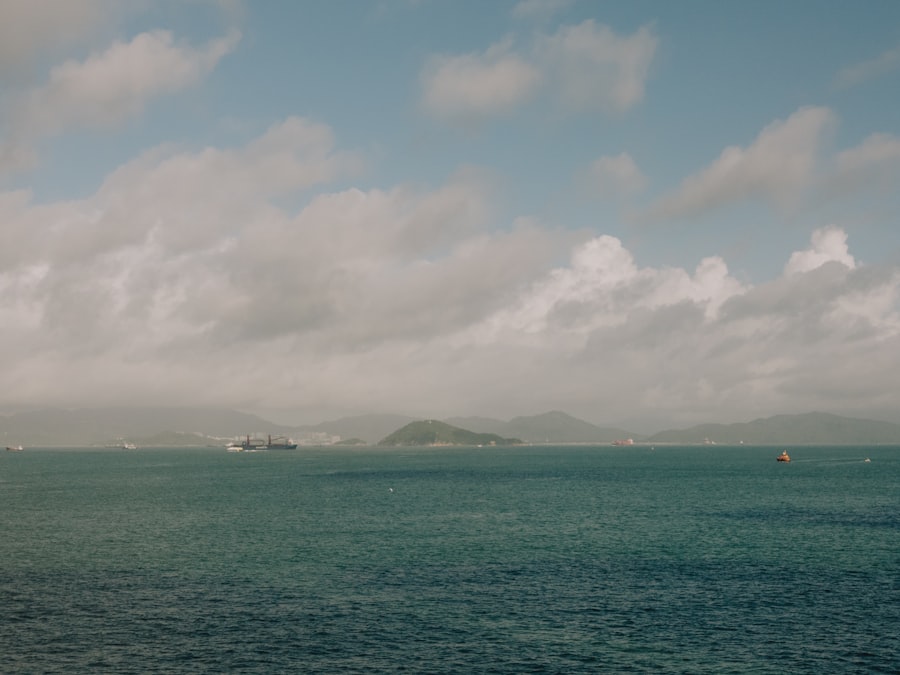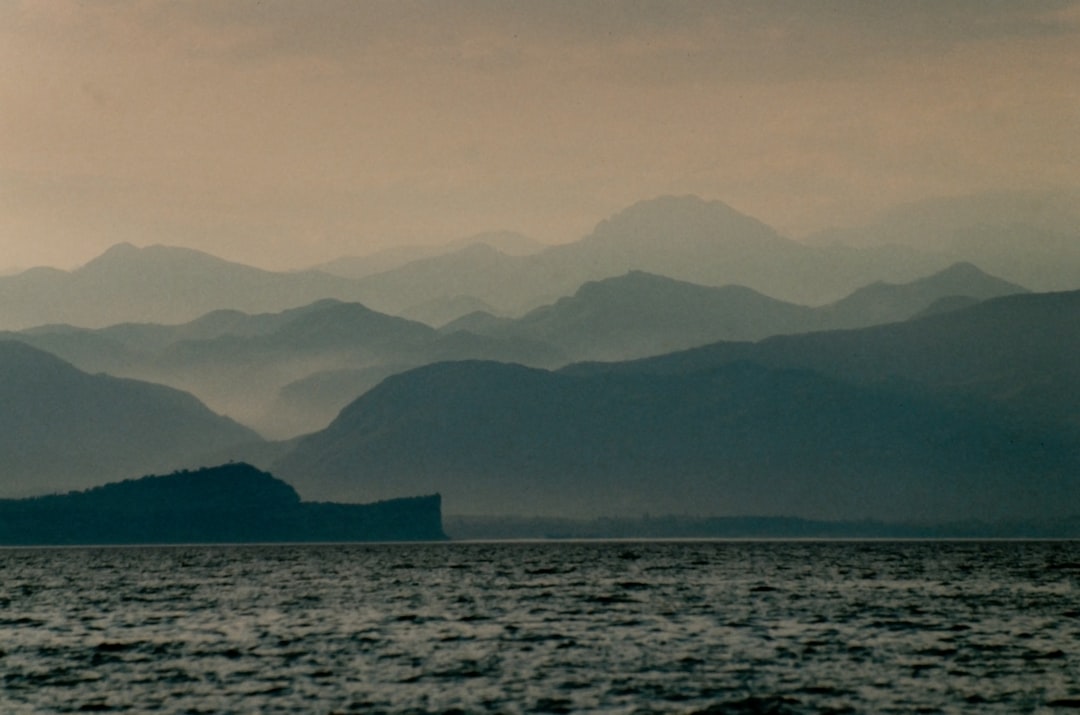The Drake Passage, a body of water situated between the southern tip of South America and Antarctica, is renowned for its tumultuous seas and breathtaking vistas. This narrow stretch of ocean, measuring approximately 600 kilometers (370 miles) wide, serves as a critical conduit for maritime traffic between the Atlantic and Pacific Oceans. Its strategic location not only makes it a vital route for shipping but also a significant area for scientific research and exploration.
The passage is often characterized by its unpredictable weather patterns and strong currents, which can create challenging conditions for even the most seasoned sailors. The Drake Passage is not merely a geographical feature; it is a symbol of adventure and discovery. For centuries, it has captured the imaginations of explorers, scientists, and nature enthusiasts alike.
The passage is named after Sir Francis Drake, the English sea captain who was the first to navigate these waters in the late 16th century. Today, it continues to be a focal point for those seeking to understand the complexities of our planet’s climate and marine ecosystems. The Drake Passage stands as a testament to the power of nature and the enduring human spirit of exploration.
Key Takeaways
- The Drake Passage is a treacherous body of water located between South America’s Cape Horn and the South Shetland Islands of Antarctica.
- The Drake Passage has a rich history of exploration, with famous expeditions by explorers such as Sir Francis Drake and Charles Darwin.
- The passage is home to a diverse range of wildlife, including penguins, seals, and various species of whales.
- Navigating the Drake Passage presents numerous challenges, including strong winds, rough seas, and icebergs.
- The Netflix documentary “The Drake Passage: A Journey to the End of the Earth” provides a behind-the-scenes look at the making of the film and the crew’s experiences filming in the passage.
The History of Exploration in the Drake Passage
The history of exploration in the Drake Passage is rich and varied, marked by tales of bravery and discovery. Sir Francis Drake’s voyage in 1578 was a pivotal moment in maritime history, as he became the first known person to traverse these treacherous waters. His journey not only opened up new trade routes but also sparked interest in the southern seas, leading to further exploration by other adventurers.
Over the centuries, numerous expeditions have ventured into the Drake Passage, each contributing to the growing body of knowledge about this formidable region. In the 19th century, the passage became a focal point for whalers and sealers, drawn by the abundant marine life that thrived in its icy waters. Explorers like Ernest Shackleton and Robert Falcon Scott undertook perilous journeys through the Drake Passage in their quests to reach Antarctica.
Their expeditions were fraught with danger, yet they provided invaluable insights into the geography and climate of the region. The legacy of these early explorers laid the groundwork for modern scientific research and conservation efforts in the Drake Passage.
Wildlife in the Drake Passage

The Drake Passage is teeming with diverse wildlife, making it a hotspot for marine biology and ecological studies. The nutrient-rich waters support a variety of species, including seals, whales, and an array of seabirds.
Their acrobatic displays and haunting songs add to the allure of this remarkable region. In addition to whales, the passage is home to several species of penguins, including the iconic Emperor and Gentoo penguins. These flightless birds can often be seen waddling along ice floes or diving into the frigid waters in search of fish.
The presence of such diverse wildlife highlights the ecological significance of the Drake Passage and underscores the need for ongoing research and conservation efforts to protect these fragile ecosystems.
The Challenges of Navigating the Drake Passage
| Challenge | Description |
|---|---|
| Strong Winds | The passage is known for its strong westerly winds, often reaching gale force, which can make navigation difficult. |
| Rough Seas | The combination of strong winds and currents can lead to rough seas, causing discomfort for passengers and crew. |
| Narrow Passage | The Drake Passage is a narrow stretch of water between South America’s Cape Horn and the South Shetland Islands, making it challenging to navigate. |
| Icebergs | During certain times of the year, icebergs can pose a threat to ships navigating the passage. |
| Remote Location | In the event of an emergency, the remote location of the passage can make rescue and assistance difficult to access. |
Navigating the Drake Passage presents numerous challenges that test even the most experienced mariners. The passage is notorious for its rough seas, strong winds, and rapidly changing weather conditions. Sailors must contend with powerful currents that can create steep waves and unpredictable swells, making it essential for vessels to be well-equipped and crewed by skilled professionals.
The combination of these factors has earned the Drake Passage a reputation as one of the most treacherous waterways in the world. In addition to natural obstacles, navigators must also be aware of icebergs and other hazards that can pose significant risks to ships traversing these waters. The presence of ice can complicate navigation further, requiring careful planning and constant vigilance.
Despite these challenges, many adventurers are drawn to the Drake Passage for its beauty and sense of adventure, willing to brave its perils in pursuit of exploration.
The Making of the Netflix Documentary
The making of a Netflix documentary focused on the Drake Passage represents a significant endeavor that aims to capture both its beauty and challenges. Filmmakers sought to showcase not only the stunning landscapes but also the rich history and wildlife that define this unique region. Through breathtaking cinematography and compelling storytelling, they aimed to engage viewers with the wonders of nature while raising awareness about environmental issues affecting the passage.
The production team faced numerous logistical challenges while filming in such a remote and unpredictable location. From securing permits to coordinating with scientists and conservationists, every aspect required meticulous planning. The filmmakers were determined to portray an authentic representation of life in the Drake Passage, highlighting both its allure and its dangers.
Their efforts culminated in a documentary that not only entertains but also educates audiences about this remarkable part of our planet.
The Crew’s Experience Filming in the Drake Passage

The crew’s experience filming in the Drake Passage was nothing short of extraordinary. They encountered firsthand the raw power of nature as they navigated through turbulent waters and unpredictable weather patterns. Each day brought new challenges, from battling seasickness to ensuring that equipment remained functional amidst harsh conditions.
Yet, despite these difficulties, there was an undeniable sense of camaraderie among crew members as they worked together toward a common goal. The crew also had the opportunity to witness breathtaking moments that would become highlights of the documentary. From spotting pods of whales breaching in the distance to capturing stunning sunsets over icy landscapes, these experiences left an indelible mark on everyone involved.
The crew’s dedication to their craft was evident as they sought to convey not just the visual beauty of the Drake Passage but also its significance as a vital ecosystem facing numerous threats.
The Impact of Climate Change on the Drake Passage
Climate change poses significant challenges to the delicate balance of ecosystems within the Drake Passage. Rising ocean temperatures and melting ice caps are altering marine habitats and affecting wildlife populations. Species that rely on cold-water environments are particularly vulnerable as their habitats shift or diminish due to warming waters.
Researchers are increasingly focused on studying these changes within the Drake Passage to better understand their implications for marine biodiversity and climate systems worldwide. By monitoring shifts in species distribution and population dynamics, scientists hope to gain insights into how climate change is reshaping this critical region.
The urgency of this research underscores the need for immediate action to mitigate climate change impacts on vulnerable ecosystems.
The Importance of Preserving the Drake Passage
Preserving the integrity of the Drake Passage is essential for maintaining its ecological balance and ensuring that future generations can experience its wonders. As human activity increases in this remote region—whether through tourism, fishing, or shipping—the potential for environmental degradation grows. Conservation efforts are crucial to protect marine life and habitats from overexploitation and pollution.
International cooperation is vital in safeguarding this unique area. Various organizations are working together to establish protected marine areas within the Drake Passage, aiming to create safe havens for wildlife while promoting sustainable practices among industries operating in or near these waters. By prioritizing preservation efforts, stakeholders can help ensure that this remarkable ecosystem remains vibrant for years to come.
The Beauty of the Drake Passage
The beauty of the Drake Passage is undeniable, characterized by dramatic landscapes that evoke a sense of awe and wonder. Towering icebergs float serenely amidst deep blue waters, while rugged coastlines provide a stark contrast against expansive skies filled with swirling clouds. This breathtaking scenery has inspired countless artists, writers, and adventurers throughout history.
Beyond its visual splendor lies an intricate tapestry of life that thrives within these waters. The interplay between light and shadow creates mesmerizing reflections on the surface, while vibrant marine life adds bursts of color beneath. For those fortunate enough to experience it firsthand, the Drake Passage offers an unparalleled connection to nature—a reminder of both its fragility and resilience.
The Scientific Research Conducted in the Drake Passage
Scientific research conducted in the Drake Passage plays a crucial role in advancing understanding of marine ecosystems and climate dynamics. Researchers from around the world converge on this region to study everything from ocean currents to species behavior, contributing valuable data that informs conservation efforts globally. Long-term monitoring programs have been established to track changes over time, providing insights into how environmental factors influence marine life.
One area of focus is understanding how shifting ocean temperatures affect species distribution within the passage. By examining trends in fish populations or seabird nesting patterns, scientists can gain insights into broader ecological shifts occurring due to climate change. This research not only enhances knowledge about local ecosystems but also contributes to global efforts aimed at addressing pressing environmental challenges.
The Legacy of the Drake Passage
The legacy of the Drake Passage is one marked by exploration, discovery, and a deep appreciation for nature’s power and beauty. From its historical significance as a route for early explorers to its current role as a focal point for scientific research and conservation efforts, this remarkable body of water continues to inspire awe and curiosity. As humanity grapples with pressing environmental issues, understanding and preserving places like the Drake Passage becomes increasingly vital.
As future generations look toward exploring this iconic region, it is essential that they do so with respect for its delicate ecosystems and recognition of their interconnectedness with global climate systems. The legacy of those who have ventured through these waters—whether explorers or scientists—serves as a reminder that our relationship with nature is one that requires stewardship and care. In preserving the beauty and integrity of the Drake Passage, humanity honors not only its past but also its future on this planet we all share.
If you’re intrigued by the breathtaking visuals and compelling storytelling of the Drake Passage documentary on Netflix, you might find the exploration-themed content on MyGeoQuest equally captivating. This website delves into various geographical wonders and offers insights into the natural world that complement the themes explored in the documentary. For a deeper dive into similar topics, check out this related article on MyGeoQuest, which provides additional context and fascinating details about the regions and phenomena featured in the documentary.
WATCH NOW! Drake Passage: Earth’s Deadliest Waters Revealed
FAQs
What is the Drake Passage?
The Drake Passage is the body of water between the southern tip of South America and the northern tip of the Antarctic Peninsula. It is known for its rough seas and challenging sailing conditions.
What is the Drake Passage documentary on Netflix about?
The Drake Passage documentary on Netflix explores the treacherous waters of the Drake Passage and the unique ecosystem and wildlife that inhabit the region. It also delves into the history of exploration and scientific research in the area.
Who is the filmmaker behind the Drake Passage documentary on Netflix?
The filmmaker behind the Drake Passage documentary on Netflix is not specified in the article. It is recommended to check the documentary’s credits for this information.
What can viewers expect to see in the Drake Passage documentary on Netflix?
Viewers can expect to see stunning footage of the Drake Passage, including its dramatic landscapes, diverse wildlife, and the challenges faced by those who navigate its waters. The documentary may also feature interviews with scientists and explorers who have studied the region.
Is the Drake Passage documentary suitable for all ages?
The suitability of the Drake Passage documentary for all ages is not specified in the article. It is recommended to check the documentary’s rating and content warnings on Netflix before viewing with younger audiences.
